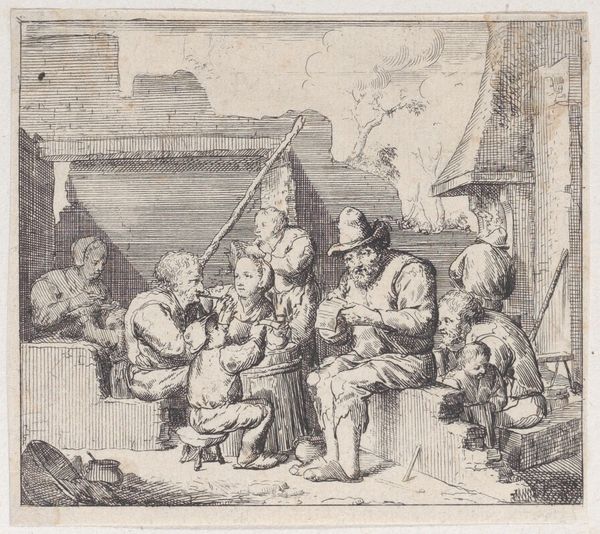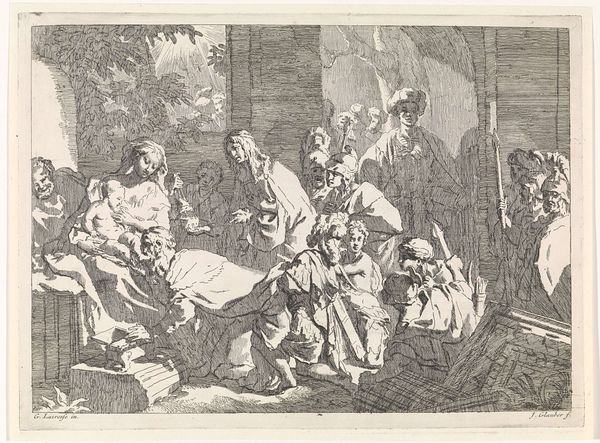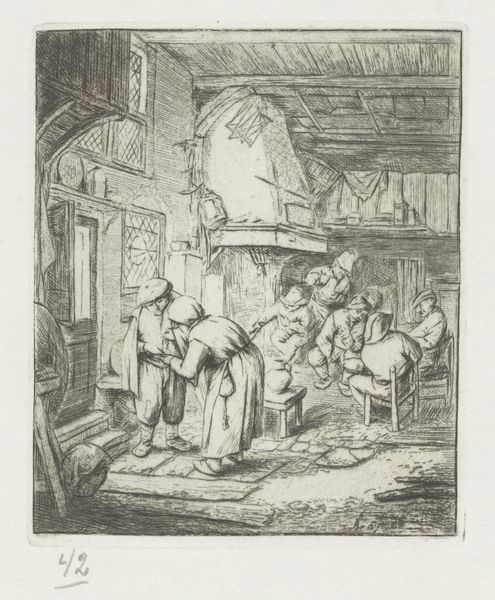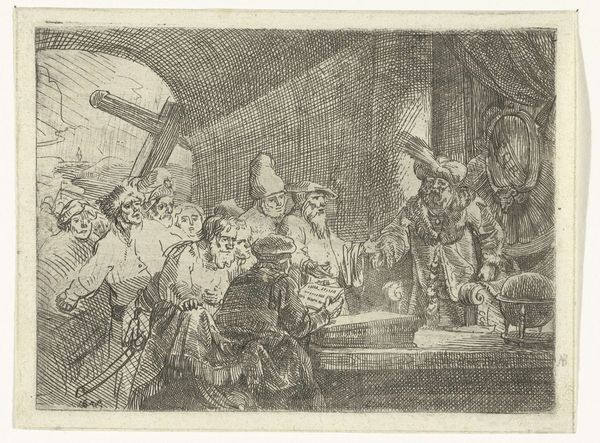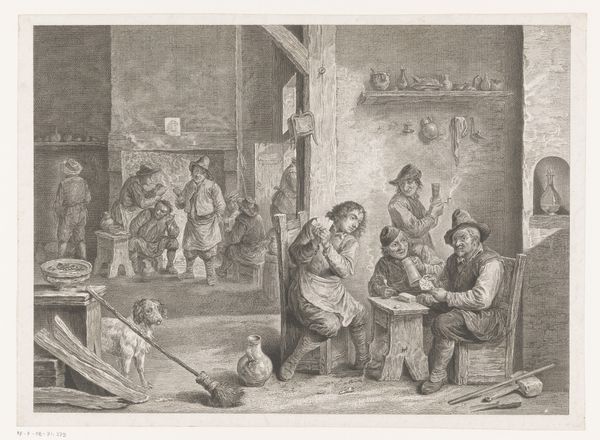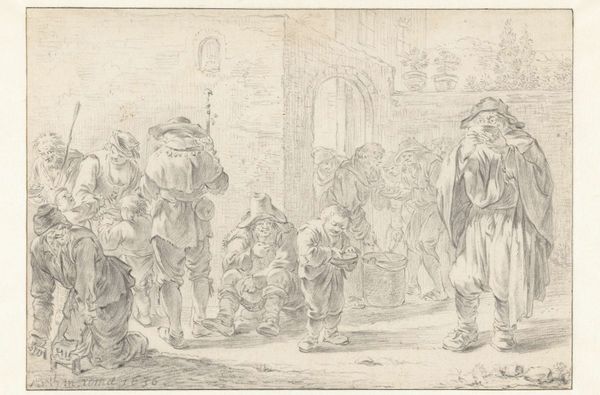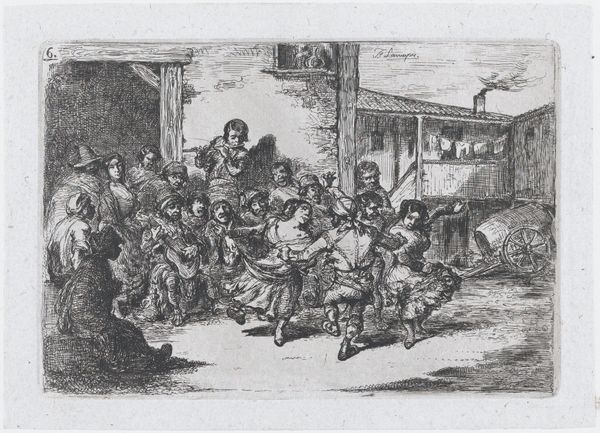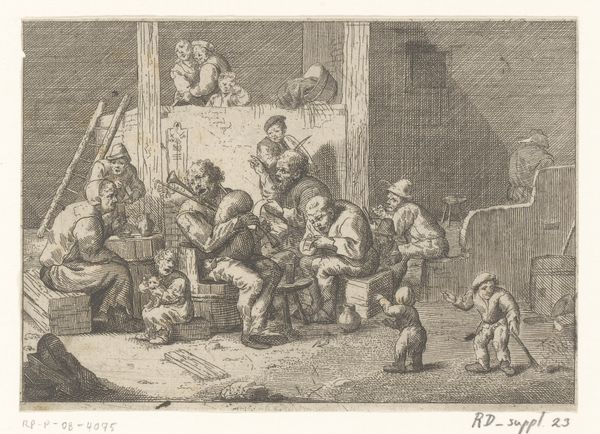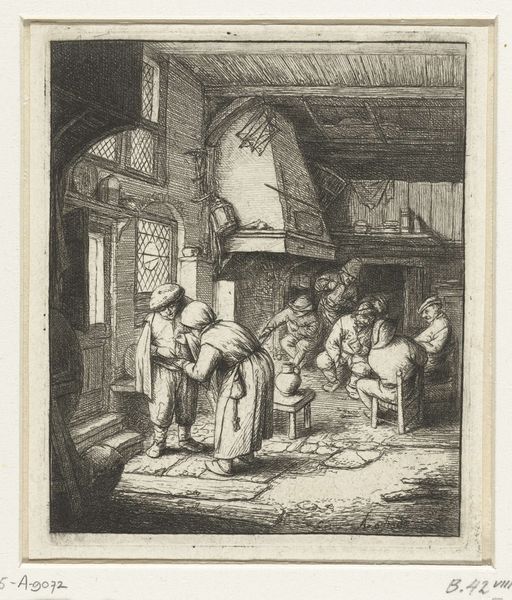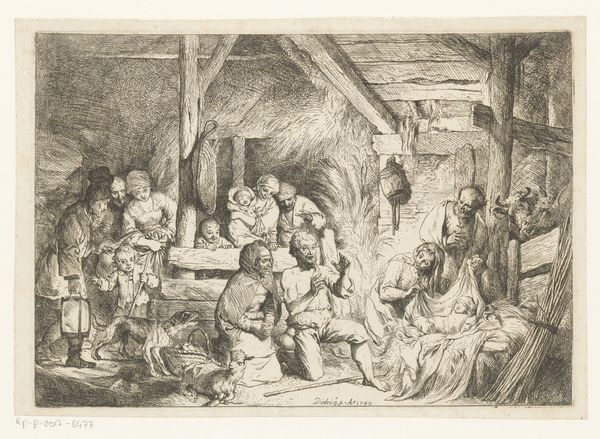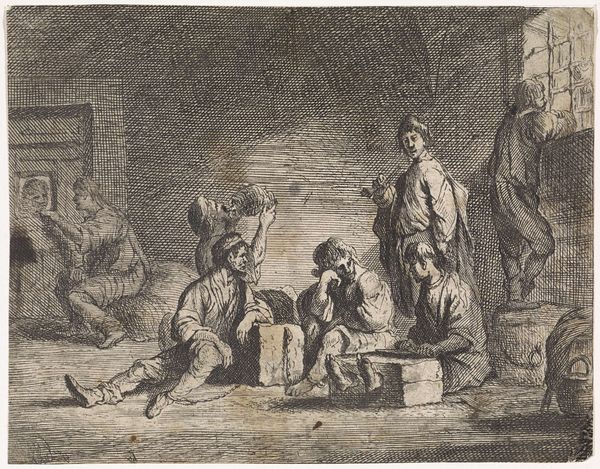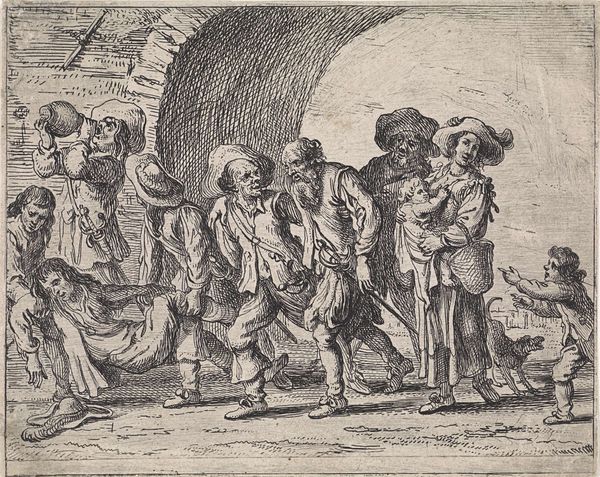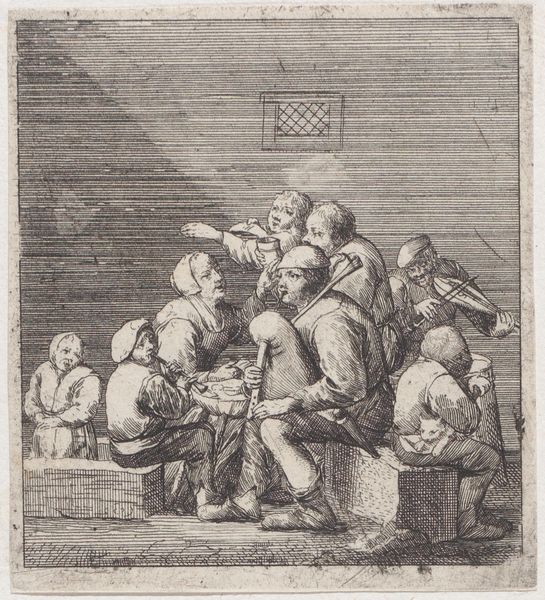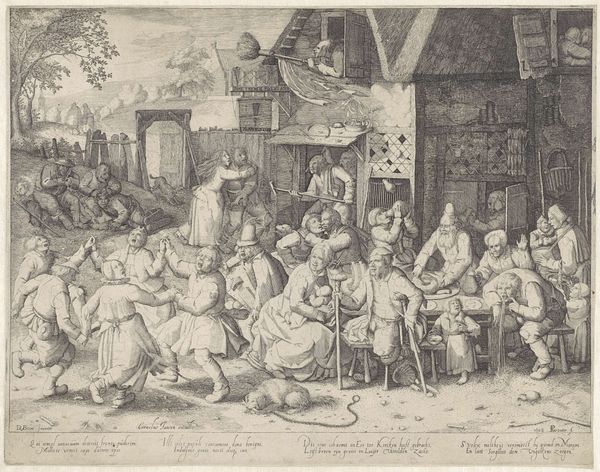
drawing, etching, paper, ink
#
drawing
#
baroque
#
etching
#
landscape
#
classical-realism
#
figuration
#
paper
#
ink
#
genre-painting
#
history-painting
Dimensions: height 280 mm, width 382 mm
Copyright: Rijks Museum: Open Domain
Curator: So, here we have "Adoration of the Shepherds", a baroque-style etching by Johannes Glauber. It was created sometime between 1656 and 1726. Editor: The immediate feeling is of muted reverence. It's monochrome, but the density of the lines really create a sense of depth and intimacy. Everyone seems to be holding their breath, looking inward. Curator: Yes, there’s a profound sense of quiet contemplation, despite the gathering of figures. What I find fascinating is the intersection of classical realism and genre painting here. You have this grand biblical scene rendered with almost mundane, everyday details. Editor: Absolutely. The scene presents the idea of accessible divinity, an approachable version of holy, but there's definitely some serious social commentary subtly threaded through. Curator: How so? Editor: Look at the figures bringing gifts. They’re largely women, actively participating, maybe even leading the acts of adoration and hospitality—challenging, perhaps, the strictly patriarchal narratives typically associated with religious scenes. Curator: That's a keen observation. The women depicted definitely take centre stage compared to the passive men depicted at the sides of Mary and Joseph. It also brings a certain earthiness to the divine mystery. Editor: The skull on the pitcher in the foreground is a stark memento mori—a reminder even in this celebration of life that mortality looms. It brings an awareness to our earthly realities of the inequalities that shape who has access to joy. Curator: I always find it intriguing how artists manage to embed these subtle layers of meaning. Glauber plays with perspective here to intensify that spiritual moment, but as you mention, it also makes one ponder the social and existential conditions of that era, that continue even now. It really feels like an embrace, the way this scene humanizes Mary, a quiet nod to female power amidst the familiar iconography of adoration. Editor: It's a potent blend. It moves past purely biblical storytelling, making a tender social commentary.
Comments
No comments
Be the first to comment and join the conversation on the ultimate creative platform.
